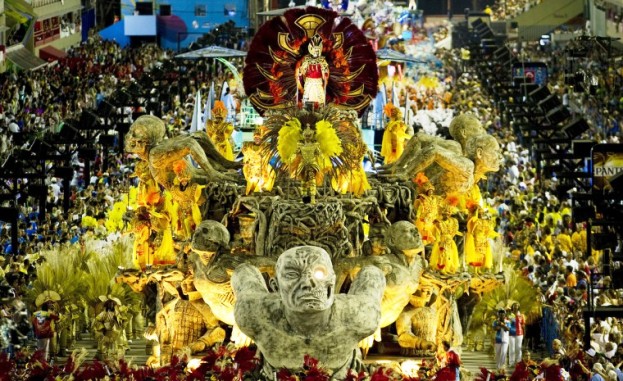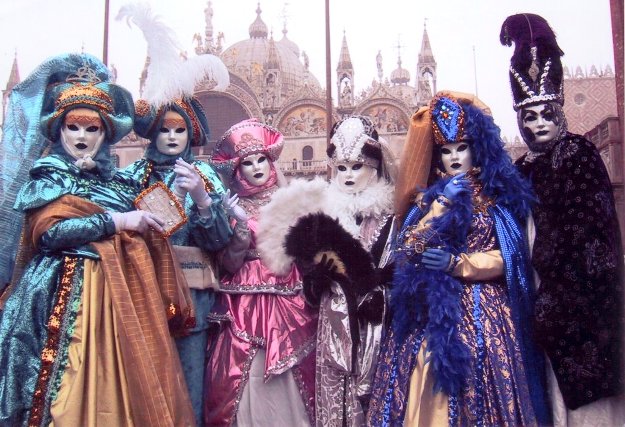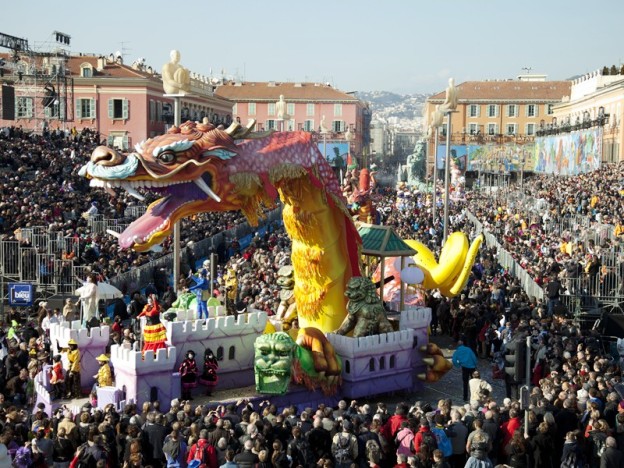Choosing to spend your vacation in a foreign city during a festival could be the best idea you’ve ever had, because it guarantees entertainment. You don’t have to talk to the travelling agency about tours and trips, because a festival will keep you busy for your entire stay. So let’s have a look at some of the best annual festivals in different parts of the world.

The Carnival of Venice is a real fairy tale, a baffling celebration, with masked balls, fireworks and parties that suggest mystery and magic. It takes place during the ten days before Lent and attracts tourists from all over the world.
During this famous carnival, Venice puts on its best garments and its streets become a huge stage for parades, shows, concerts and outdoor theater shows. Peoplefrom all over the world come to discover this magic carnival in a floating city,where time feels like it stopped in the eighteenth century.
The Carnival of Venice is a very popular blend of tradition, entertainment, history and good mood. The huge party includes the entire city of Venice and itmimics the atmosphere of the eighteenth century, making this event mandatory to attend at least once within a lifetime. The carnival has ancient origins. During antiquity it welcomed spring and gave people the illusion that they were all equal, as they were all disguised behind masks.

The Carnival of Sicily
The most popular Carnival of Sicily, theAcireale Carnival, enjoys a dynamic and vibrant atmosphere, within which attendees celebrate the history of the island.
It has its roots in the ancient Roman festivals of Saturn, during which people organized feasts with music and fine drinks, praying to the gods for a prosperous future and an abundant harvest. Romans painted their faces in bright colors, danced, sang, and celebrated their wellbeing. Beautiful allegorical carriages were introduced in Sicily much later, around the 1880s. Thehuge crafted masks worn during the festival are seen as satirical against the personalities of the day(politicians, actors, musicians, athletes and other celebrities). In time, master artisans have come to compete in the annual competition for the most beautiful float, making the festival a true spectacle of color, light, scenery and imagination.
Every year tourists from all over the world crowd the streets of the picturesque town of Acireale to participate in the carnival parade. They throw confetti, dance and enjoy thebeautiful show. If you want to experience the festival it would be a good idea to check a travel website and make all the arrangements a few month in advance.
The Rio Carnival
The Rio Carnival is a wild four-day celebration which takes place 40 days before Easter, in February, the hottest month in the Southern hemisphere, when summer is at its peak. It officially begins on Saturday and ends on Tuesday.Thenext day is Ash Wednesday and the beginning of Lent, during which everyone has to abstain from all bodily pleasures. This carnival, with all its excesses, is a celebration of the profane, an act of farewell to the “pleasures of the flesh” before Lent.
From the beautiful and sexy beaches of Rio de Janeiro to Rio Carnival and the Rio Nightlife, the type of energy that the city of Rio emulates is just simply electrifying. What is even more exhilarating are the deliciously bronzed samba dancers, the pulsating music, the energy and applause of the spectators filled with Cariocas and visitors from around the world who call come to the same place to experience the world famous Rio Carnival. Held every year during the week leading up to Lent, Rio Carnival attracts visitors from all corners the globe.
It is inconceivable to think of Rio without thinking of its unrivaled Carnival. Anticipation builds and the excitement grows as Carnival time gets closer and closer. Without a doubt, this is the favorite holiday celebration in Rio. The city glows with the smiles and energy of the locals — or Cariocas. Samba music can be heard coming from neighborhoods throughout the city and crowds gather to dance and play all day, night and straight into the next morning. It is the inherent spirit of the Cariocas and their true joie de vive that makes Rio Carnival such a glorious success year after year.
The Carnival of Tenerife
The Carnival of Tenerife is the most important event of the islands in the Canaries archipelago and is considered the second most important one in the world, after the one in Rio de Janeiro. The celebration has two parts: an official one, and one in the streets. The official celebration includes the participation of over 100 groups of artists, and the vast street fiesta involves the participation of all residents on the island.
Each year a different theme is chosen and the carnival kicks off with the presentation of the Carnival Queen Contestants. Days of band and murga (comedic folk singers) contests and concerts follow and culminate in the Grand Parade. Though the Grand Parade is really the highlight of the Carnival season, more events follow. Festivities focus on Santa Cruz to begin with but gradually spread out to other areas as each town and village celebrates its own fiesta.
It is said in Tenerife that nothing happens for two weeks before carnival because everyone is busy getting ready, then of course nothing can happen during carnival because companies only work a couple of hours a day so there is no time and after carnival nothing happens because everyone is recovering from carnival. Then Puerto de la Cruz starts it’s carnival, followed by Los Cristianos!

The Carnival of Nice
The Carnival of Nice is one of the grandest events of its kind in the world. Organized parades, floats, elegant range of flowers, lights and sound… all are animated by over 1,000 musicians and dancers from all over the world.
Nice Carnival is one of the world’s oldest, the earliest reference dating back to 1294. Today it’s a glorious 12-day party running from mid February to the end of the first week of March. The city of Nice erupts day and nigh with parades of floats culminating in Mardi Gras on the last day. Historically Nice Carnival was the last chance to indulge in rich foods and drink before the 40-day Lent fast, and the chance to disguise your identity behind fantastic masks and enjoy pleasures forbidden by the Catholic church during the rest of the year.
Nice Carnival begins with the arrival of the carnival king in his Corso Carnavalesque (Carnival Procession) in the Place Massena. Around 20 floats take the theme of the year with giant puppets (called grosses tetes or big heads), and 1,000 musicians, street artists and dancers from all around the world. The King takes the keys of the city and declares his brief reign of extravagance and excess.
There are spectacles during the Carnival as well as the world-famous Bataille de Fleurs (Battle of Flowers) which takes place on various dates throughout the Carnival. The streets are full with stalls selling gifts and food and a crowd of visitors there to have a good time. It feels feel that Spring is beginning.
On the last night, King Carnival is burnt. Then there’s a gigantic firework display to music over the Baie des Anges, the soaring fireworks reflected in the waters of the Mediterranean.

